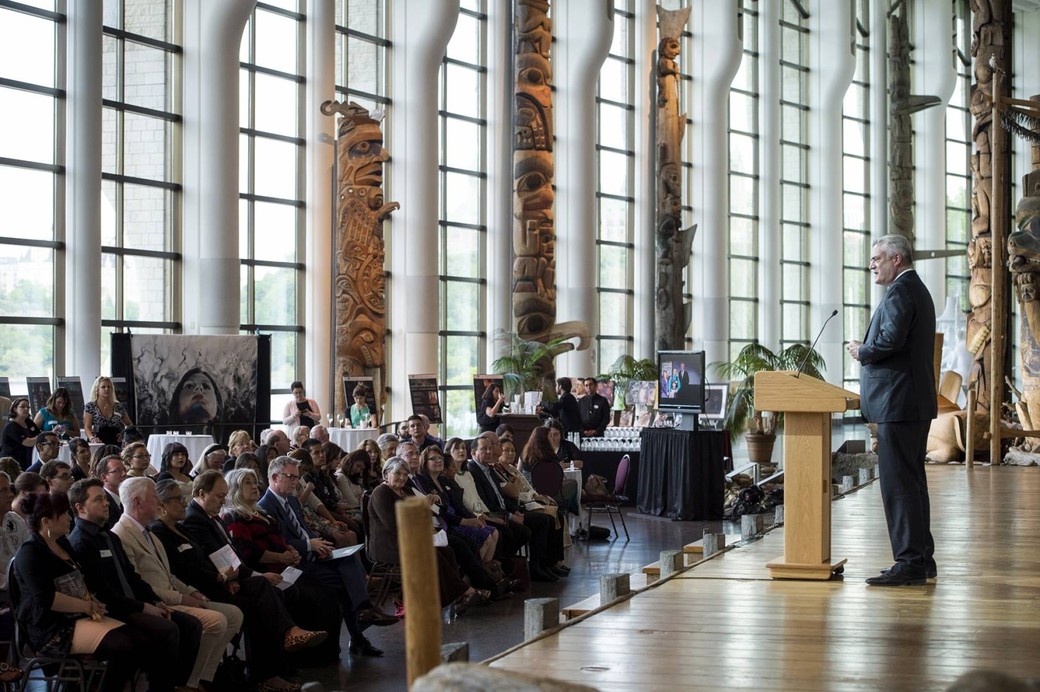
The Path to Self-Governance: A Rationale Behind Eradicating the Indian Act
An archaic and racist-based legislative barrier to First Nations Peoples achieving self-governance is the Indian Act. It is considered one of their biggest obstacles. The Act is outdated and an inaccurate reflection of the current relationship between the original inhabitants of our country and the federal government. This affects the ability of First Nations Peoples to build democratic governments and develop the effective management of power and policy to be determinants of their own law.
First administered in 1876, the Indian Act defined who could be registered as an “Indian,” stipulating legal rights and disabilities for those registered and obtaining status. For example, before 1985, those with this status could lose it through marrying a man who was a non-Status Indian, enfranchisement, having a mother/paternal grandmother without status or being born out of wedlock to a mother with status and a father without. Bill C-31 amended these laws and saw many regain status. In 2000, the Act was changed to allow band members living off reserves to vote in band elections and referendums. Overall, there have been over twenty changes made to the Act, which sets rules for governing reserves, how bands can be created and how band councils operate.
In a report prepared for the National Centre on First Nations Governance titled Like an Ill-fitting Boot: Government, Governance and Management Systems in the Contemporary Indian Act, Carleton University Professor Frances Abele, explains a few of the Act’s flaws.
“It reflects administrative and organizational practices that were characteristic of public institutions in the early and mid-twentieth century, but that have been modified and superseded in other governments. The Act relies upon regulation, top-down authorities, fiscal control and enforcement. Today most Canadian governments and other organizations rely upon collegial decision-making and policy development, policy research, human resource development, management accounting systems and citizen engagements. The Indian Act does not mention these things and the basic provisions do not leave much room for them,” she states.
To fuel change, Prof. Abele said it is not only the Crown and federal government’s responsibility to get rid of the Act but also the responsibility of the other parties to the treaties. In Bands or collectively as a whole, First Nations must come together to create the energy needed to eradicate the Indian Act.
“It was first hatched to provide the legal means to control Indigenous People in North America. It still bears the scars of that original purpose,” she said. “There have been important amendments to reduce gender discrimination in the act most recently and some of the most oppressive features, but it is still extraordinary in Canada because there is no other group of people in the country except prisoners in jails, who are subject to such a heavy hand of executive authority.”
It is clear dismantling the Act and in turn dissolving the Department of Aboriginal Affairs and Northern Development (DAAND) (formerly the Department of Indian Affairs and Northern Development) needs to be done. However, there are other obstacles requiring consideration before such a task is completed. The Act does provide for certain securities of First Nations on reserves and a replacement is needed to ensure these remain while also serving as a better expression of the relationship with the federal government – one of “mutual respect and based on negotiation rather than attempts at social engineering and oppression,” said Prof. Abele.
Once the Act is gone, then recommendations could begin to detail what would happen to DAAND.
“The Royal Commission on Aboriginal Peoples in 1996 recommended DIAND be dissolved and to create something like a large service department. The rest would be an agency responsible for taking care of the federal side of the relationship – that office should be in the PCO or attached to cabinet and the other things the department still administers – whether education funding or economic development funding – could be in the service department,” she added.
National Chief Shawn A-in-chut Atleo, a strong advocate for self-governance for First Nations, says North American academic leaders say the key to self sufficiency for First Nations is a genuine decision-making authority that is also supported by capable, governing institutions.
“The Indian Act was unilaterally and externally imposed on First Nations – it was not of our choosing,” he said. “Over 600 First Nations across the country have been saying that what needs to happen, based on section 35 in the Canadian Constitution, recognizes and affirms that Aboriginal title and treaty rights exist in this country. Based on those rights, First Nations should be supported with the freedom and ability to set their own path forward based on their culture. We have a real fundamental clash between the Indian Act, which has really resulted in our people being ranked 73rd on the UN Human Development Index, when Canada ranks third. We have the highest rates of suicide, unemployment and the Act does not support nor empower First Nations’ self-sufficiency.”
First Nations have been advocating for a new approach that confirms the original treaty relationship for over four decades, but Canada’s misunderstanding of our most important peoples continues. A lack of awareness may be a contributing factor and National Chief Atleo says there is not enough comprehension of the issue to really undertake it. Instead of respecting First Nations as a collective of many people, of over 50 languages and varying cultural differences, the Act imposes a skewed perspective as a single unit.
“It’s not about imposing something to replace the Act and repeat those mistakes – it’s about getting behind community-based change and removing barriers. It’s about supporting First Nations on their own path and to be able to retain their existing supports they have and land base,” added Chief Atleo. “What we’re suggesting is that we need to shift away from the current approach into something that is going to pave the way for positive change.”
A move towards this path could be creating a body like a Ministry of First Nations Crown Relations, he said, representing the relationship between First Nations and the Crown.
“Other ideas that come from international examples like New Zealand is the idea of a treaty rights tribunal which brings the idea of independence and fairness,” he said. “Right now, the federal government is both judge and jury when it comes to negotiations with First Nations.”
Prof. Abele says one of the biggest obstacles is that the Indian Act and DAAND are tied to certainties like preserving First Nations residence on a commonly held land base and other rights they believe the treaty ensures. “We now have recognition of the value of the treaties and all of that constitutes a political advance for Indigenous people and the rest of us because it moves things more towards justice but it’s bound up in the reality that it has been DAAND that has administered all the programs pursuant to the treaties and the act that constituted the relationship. There is a lot of mistrust by First Nations about top-down initiatives to get rid of the Act,” she explained.
A grassroots process to enact change headed towards self-governance is already well underway throughout the country as some First Nations are re-writing their own membership codes and institutions, said Prof. Abele. One example demonstrating the advances First Nations have already made includes the National Centre for First Nations Governance (NCFNG), an organization that models effective governance on five pillars including: the people, the land, laws and jurisdiction, institutions and resources. The Centre has also developed and piloted an innovative law policy development workshop in recognition of the need for improving decision-making tools. Anisa White of NCFNG’s Land, Law and Governance Research directorate stated:
“In an era where the Crown has heightened obligations to consult and accommodate First Nations, it is incumbent upon First Nation governments to set out clearly defined consultation and accommodation policies. Policy development is a critical part of protecting the rights and interests of nations as well as ensuring territorial integrity. We need to move forward in reconciling the rights and interests of First Nations with the assertion of Crown sovereignty. Ultimately, exercising inherent rights of self-governance begins with law and policy.”
For National Chief Atleo, the key for First Nations to design their own governing system is education reform. He says it also makes good economic sense to support First Nations people in the workforce because of Canada’s ageing population and research proving that closing the success gap in education and employment by 2026 would contribute $179 billion to Canada’s GDP. “A strong First Nations makes a stronger Canada. We have to increase the rate and pace of positive change. I look in the eyes of our young people across the country and I see there is a burning desire to lift the people in their communities up and they are prepared to take the rightful place,” he said.
Prof. Abele is also optimistic about the new generation coming into power, as they are more educated with a “psychological set point already starting from a basis of more quality than their parents and grandparents.” In the future, she said she sees many forms of self-government, DAAND and the Indian Act will no longer exist, and a diverse array of small governments across the country will thrive.
“It may not be a single event, but maybe we could say between 1995 and 2025, First Nations across the country began to take control of their own institutions of governance and in the end radically transformed their relationship with the Crown,” she said.











